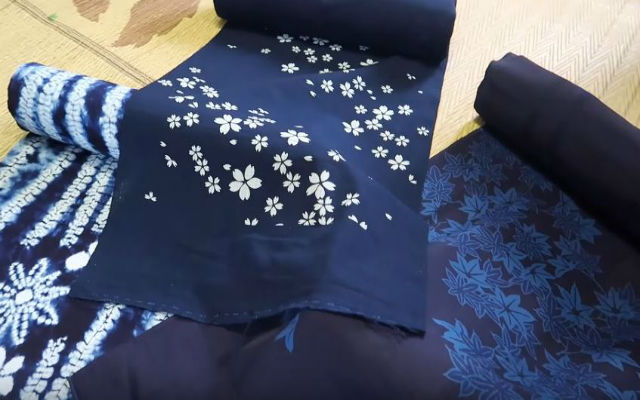
Source: YouTube
Japan Blue: An Indigo Dyeing Process That Links You With The Heart Of A Japanese Craftsman
Sponsored Content
- Sponsored by:
- Japanese Culture: Making Aizome - Ginza Mitsukoshi Event
- Tags:
- Aizome / Cloth / Clothes / Craftsmanship / Fashion / Indigo Dying / Japan / Mitsukoshi Ginza / Tokyo / Traditional


Aizome (藍染) is the the Japanese art of indigo dyeing, which results in beautiful vivid blue hues that can be applied to silk, kimono, and other textiles. It is sometimes fondly referred to as "Japan Blue", and is the product of traditional techniques and craftsmanship. Treasured since ancient times in Japan, the appeal of Japan blue has now transferred over to modern items like jeans and hand towels, and is gaining appreciation around the world. Now the Mitsukoshi Ginza store is embracing the upcoming Spring season with a lineup of high quality Aizome goods, and an event space showcasing the prized craftsmanship that seems perfect for Japan's beautiful season of flowers.
Starting March 29th, for one week the first floor of the Mitsukoshi Ginza store will feature an event space offering a collection of Aizome items. To better understand the process that leads to these beautiful items being created, Kim Dao visited a craftsman's workshop in Tokushima, where Aizome dyeing techniques of 600 years are still used, without any chemical dyeing. Yano, the craftsman, details the painstaking but very hands-on process of creating Aizome.
Indigo seeds are harvested and then made into a dried and fermented dye substance called sukumo. Using this sukumo, the craftsman can dye items with a technique that can be traced back to the Edo period. A diverse range of shades can be achieved depending on the number of times and item is dipped. The dyer must attend to the sukumo everyday, and each vat is separated by aging period and temperature conditions are monitored.
The mixture is tended to for weeks, and when bubbles called ai no hana (indigo flower) surface, the dye is ready to be put to use. By grasping the indigo with his hands daily, Yano is able to get a constant feeling for the necessary adjustments. He finds joy in the process, saying that "it's challenging, but fun to see the change in the indigo's facial expression everyday."
After paraffin is boiled out carefully, the cloth is washed out with water and then finally ironed.
Using these techniques, a simple handwoven handkerchief can be given a distinct and beautiful look (and dipped up to 15 times!), one of many gorgeous hues made possible by Aizome, and then adorned with desired writing and designs. With the process of creating these beautiful indigo items featuring earthy feel, scents, and an appreciation of the seasons, it's no wonder that "Japan Blue" has attracted such a following around the world.
An opportunity to witness the depth of this age-old dyeing process where the dyer and indigo are said to be working together will be available starting March 29th at the Mitsukoshi Ginza store, with a Spring lineup that welcomes in the new season with a celebration of the traditional techniques of Japan Blue.
Here are a few of the elegant Aizome items that will be introduced at the event. Even such a long-standing indigo-dying technique translates perfectly into modern fashion.
Mitsukoshi Ginza "Indigo Spring Coordination"
3/29(Wednesday)~4/4(Tuesday) Mitsukoshi Ginza 1st floor, Global Message
4/5 (Wednesday)~4/11(Tuesday) Mitsukoshi Ginza 1st floor, Fashion Item
http://i.isetan.co.jp/mitsukoshi/ginza/en/news/2017/03/aizome-indigo.html